Novel bidirectional vector strategy for amplification of therapeutic and reporter gene expression
- PMID: 15242528
- PMCID: PMC4153396
- DOI: 10.1089/1043034041361271
Novel bidirectional vector strategy for amplification of therapeutic and reporter gene expression
Abstract
Molecular imaging methods have previously been employed to image tissue-specific reporter gene expression by a two-step transcriptional amplification (TSTA) strategy. We have now developed a new bidirectional vector system, based on the TSTA strategy, that can simultaneously amplify expression for both a target gene and a reporter gene, using a relatively weak promoter. We used the synthetic Renilla luciferase (hrl) and firefly luciferase (fl) reporter genes to validate the system in cell cultures and in living mice. When mammalian cells were transiently cotransfected with the GAL4-responsive bidirectional reporter vector and various doses of the activator plasmid encoding the GAL4-VP16 fusion protein, pSV40-GAL4-VP16, a high correlation (r(2) = 0.95) was observed between the expression levels of both reporter genes. Good correlations (r(2) = 0.82 and 0.66, respectively) were also observed in vivo when the transiently transfected cells were implanted subcutaneously in mice or when the two plasmids were delivered by hydrodynamic injection and imaged. This work establishes a novel bidirectional vector approach utilizing the TSTA strategy for both target and reporter gene amplification. This validated approach should prove useful for the development of novel gene therapy vectors, as well as for transgenic models, allowing noninvasive imaging for indirect monitoring and amplification of target gene expression.
Figures

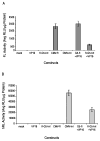
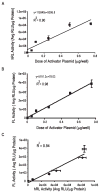
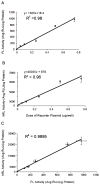
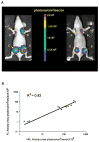
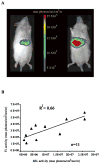
References
-
- BHAUMIK S, GAMBHIR SS. Simultaneous imaging of the expression of two bioluminescent reporter genes in living mice. Mol Ther. 2002b;5:S422.
-
- BLAKE P, JOHNSON B, VANMETER JW. Positron emission tomography (PET) and single photon emission computed tomography (SPECT): Clinical applications. J Neuroophthalmol. 2003;23:34–41. - PubMed
Publication types
MeSH terms
Substances
Grants and funding
LinkOut - more resources
Full Text Sources
Other Literature Sources
Medical

